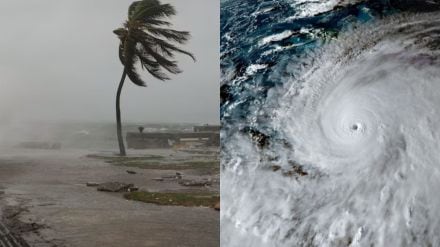Hurricane Melissa has unleashed one of the most powerful displays of nature in recorded history, rewriting what the Caribbean and the world thought was possible during hurricane season.
Making landfall in Jamaica on Tuesday with winds blasting at 185 miles per hour, Melissa entered the record books as a Category 5 monster and the strongest storm the island has ever seen.
By Wednesday morning, it had shifted north into Cuba with Category 3 strength, hitting at 120 miles per hour before weakening slightly.
At least seven people have lost their lives as Jamaica, Cuba, Haiti, and the Dominican Republic struggle with catastrophic winds, extreme flooding, and deadly storm surge.
“For Jamaica, it will be the storm of the century for sure.” With those words, Jamaican Prime Minister Andrew Holness indicating the country’s dire reality.
He added, “There is no infrastructure in the region that can withstand a Category 5.” Millions of residents, most without access to secure shelters, were forced to face the storm in vulnerable homes, many already weakened by economic stress and housing shortages.
Record-breaking hurricane
Melissa now ranks among the most powerful hurricanes in Atlantic history, tied with Hurricane Dorian in 2019 and the infamous 1935 Labour Day hurricane as the strongest storms ever to make landfall. What stunned experts most was how fast Melissa intensified. In just 24 hours, its wind speeds doubled, jumping from 70 mph to 140 mph.
Experts expect up to 27 inches, nearly what Jamaica typically gets in three months. Coastal regions are facing storm surges up to 13 feet high, threatening to swallow entire communities. With a population of 2.8 million and shelter space for only 20,000 people, most Jamaicans had no choice but to ride out the storm at home.
Lives and landscapes in crisis
By Wednesday, the human impact was impossible to ignore. Homes were flattened, hospitals were damaged, and schools were underwater. Officials across the Caribbean reported widespread devastation, while the National Hurricane Center warned of “dangerous flash floods and landslides” in Cuba, Haiti, and the Dominican Republic.
Jamaica’s mountainous terrain, normally scenic, has become a deadly funnel for floodwaters pouring into populated areas. Prime Minister Holness captured the nation’s fear and faith, saying, “I’m praying for those residents, and we have been preparing and we have been praying for the best.”
Hurricane season no one saw coming
Melissa is not just another storm, it is redefining the 2025 hurricane season. Although the United States had seen an unusually quiet start, this calm was deceptive.
Melissa is the third Category 5 hurricane this year, following Erin and Humberto, making 2025 one of the most extreme seasons on record.
Former NOAA official Monica Medina explained to Vox, “It’s been a busy season. It’s just the storms have not hit the US.”
Hurricane expert Michael Fischer added a warning: “We have to be careful before we make assessments of this hurricane season… the book is not done being written yet.”
History supports his concern. Hurricane Andrew, one of the most destructive storms in US history, also formed during what was considered a below-average season.
